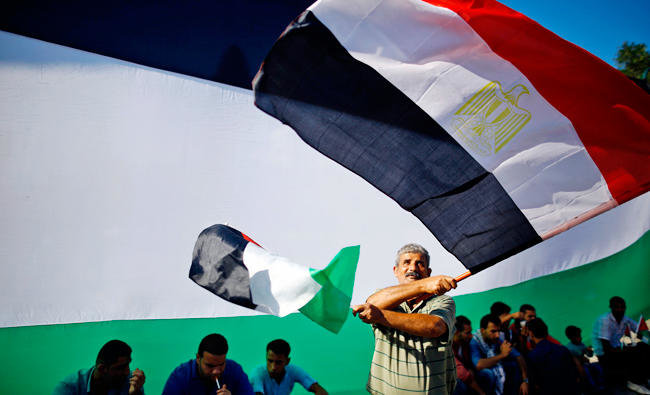Fatah and Hamas: A decade of strained relations

The split has seen rival administrations run by Hamas in the Gaza Strip and by President Mahmud Abbas�s Palestinian Authority in the West Bank. Photo: Middle East Eye
(AFP) - The handing over of Gaza Strip border crossings by Islamist movement Hamas to the Palestinian Authority on Wednesday is the latest step in efforts to end a 10-year rift.
The split, which has at times erupted into deadly conflict, has seen rival administrations run by Hamas in the Gaza Strip and by President Mahmud Abbas’s Palestinian Authority in the West Bank.
Here is a look back at the history of the dispute:
Islamists win at the polls
In 2006, the Islamists of Hamas take part in elections to the Palestinian parliament for the first time, sweeping to a landslide victory over Abbas’s Fatah movement, which had dominated it since it was established.
A unity government is installed with Hamas taking key posts but it is dogged by international demands, rejected by the Islamists, that they renounce violence and recognise Israel and past peace deals.
Hamas seizes Gaza
In early 2007, simmering tensions between the rival factions erupt into bloody clashes in Gaza.
After a week of violence in June, Abbas dismisses the unity government and declares a state of emergency in the territory.
But Hamas fighters rout pro-Abbas forces and take control, a move the president calls a coup.
Reconciliation stillborn
In April 2011, Fatah and Hamas say they have reached an understanding to create an interim government to prepare for elections, but implementation is repeatedly delayed.
In January 2012, the rivals strike a prisoner exchange agreement. The following month, they agree that Abbas should lead an interim government, but the deal is disputed within Hamas and never implemented.
In April 2014, the Abbas-led Palestine Liberation Organisation and Hamas finally agree on a unity government.
It is sworn in on June 2 but fails to exercise authority over Gaza where Abbas accuses Hamas of setting up a parallel administration.
In July-August 2014, the factions put up a united front after Israel launches a 50-day blitz against Gaza in response to rocket fire, but the unity government falls apart months later.

A Palestinian man waves the flags of Egypt and Palestine as people gather in Gaza City to celebrate after rival Palestinian factions Hamas and Fatah reached an agreement on ending a decade-long split following talks mediated by Egypt. Photo: AFP
Pragmatism
In May 2017, Hamas makes a major revision to its founding charter, easing its stance on Israel after having long called for its destruction.
The Islamist group says its struggle is not against Jews but against Israel as an occupier, and accepts the idea of a Palestinian state in territories occupied by Israel in the Six-Day War of 1967.
The group -- which remains blacklisted as a terrorist organisation by the United States and the European Union as well as Israel -- is seen as seeking to ease its isolation without marginalising hardliners in its ranks.
Pressure and concessions
Tensions persist over the formation by Hamas of an "administrative committee" in Gaza which is seen as a rival Palestinian government.
Abbas puts the squeeze on Hamas including by cutting payments for electricity supplies to the territory.
An Egyptian-led reconciliation push receives a major boost when Hamas agrees on September 17 to dissolve the committee and cede civil power, saying it is ready for talks on a new unity government and elections.
Egyptian push
In early October, Palestinian Authority prime minister Rami Hamdallah visits Gaza for the first time since 2015.
His ministers take formal control of government departments in the territory.
On October 10, the two factions open detailed reconciliation talks mediated by Egypt in Cairo.
On October 12, the two sides announce they have reached a deal.
Fatah says Abbas will visit Gaza within a month and sanctions he had imposed on the territory will soon be lifted.
Some 3,000 Palestinian Authority police officers are to redeploy to Gaza, a member of the negotiating team says.
But the two sides remain sharply at odds over the future of Hamas’s 25,000-strong armed wing, which the Islamists say is non-negotiable.

